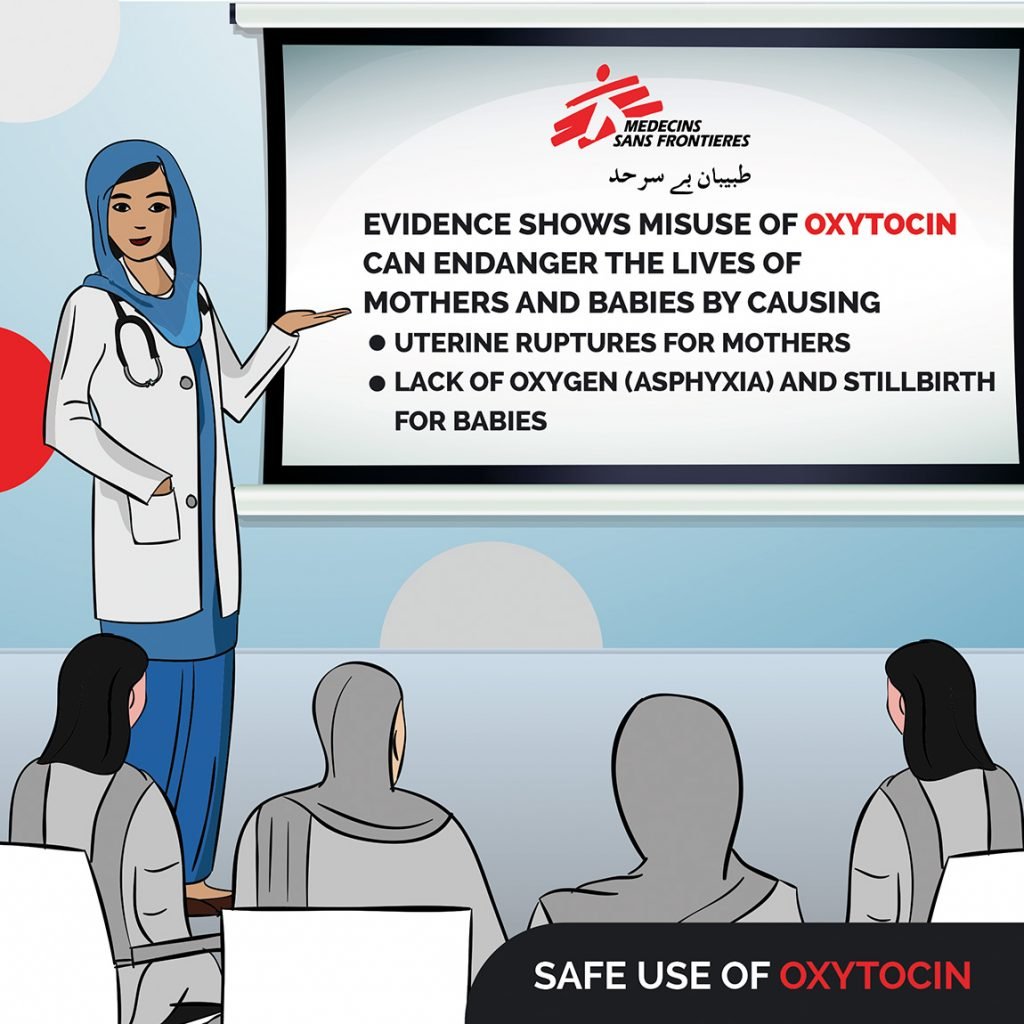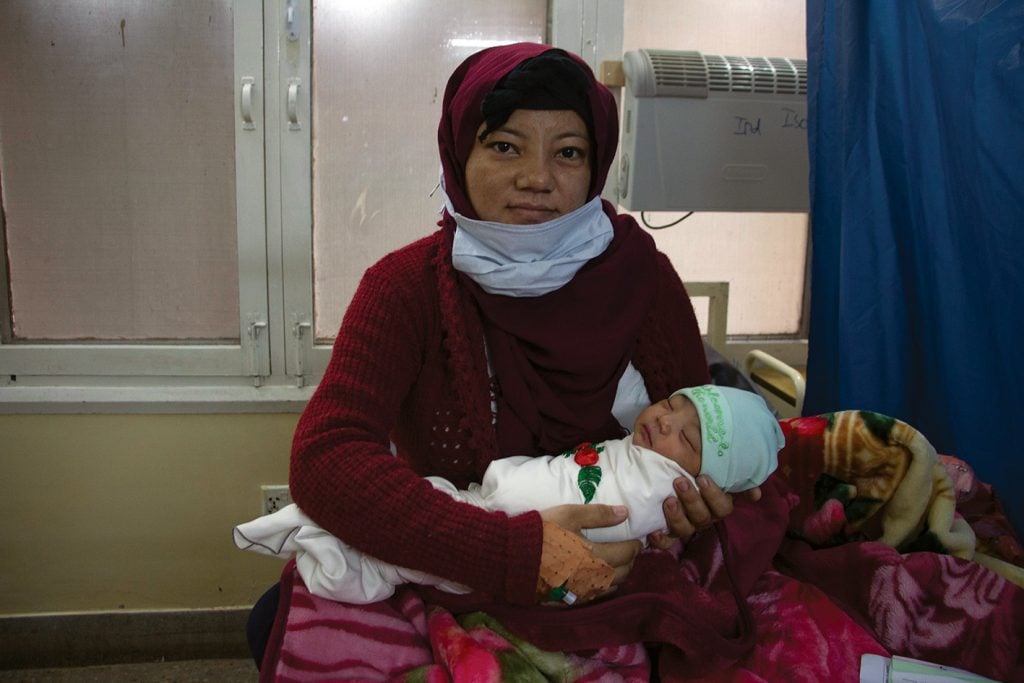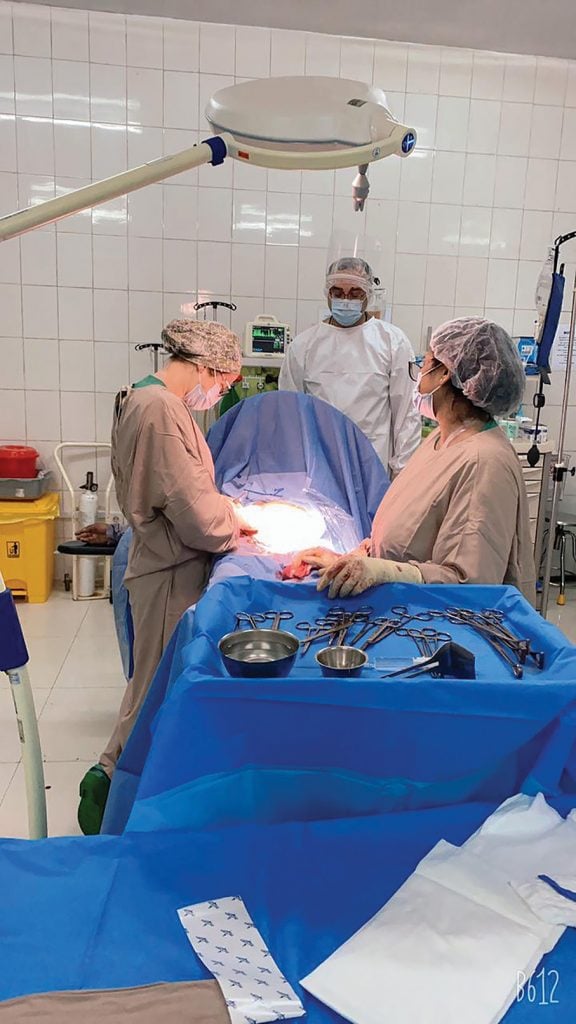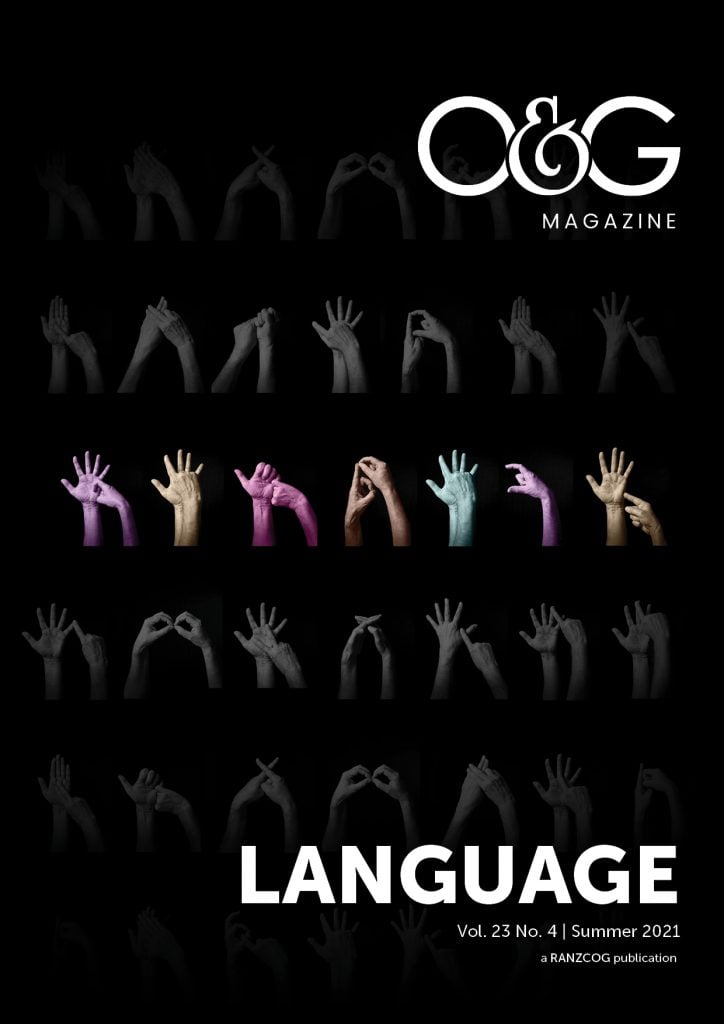Peshawar Women’s Hospital (PWH), a maternity hospital that was opened by Médecins Sans Frontières (MSF) in northern Pakistan in 2011, has celebrated its tenth anniversary this year. Its location in Peshawar city provides a neutral access point to healthcare for the vulnerable population of women that it assists: women from the ex-FATA (Federally Administered Tribal Areas) region along the Pakistan-Afghanistan border; Afghan refugees; and women from the surrounding rural areas.
These patients are over-represented in maternal and neonatal morbidity and mortality in the region, with recent estimates of maternal mortality in rural regions 25% higher than urban areas.1 Even at national level, Pakistan’s rates are high by world standards: neonatal mortality was estimated at 41 deaths per 1000 live births in 2019,2 and maternal mortality at 140 per 100,000 in 2017.3
Complications of induced labour
Over the years, PWH has understandably grown, and now conducts 550–700 deliveries per month. Patients receive free care and remuneration for the cost of travel – just one of the obstacles they face to receive safe care in labour. Due to some of the distances and the capacity of other facilities at which a patient may begin her labour, it is not unusual to receive patients who are near collapse on their arrival to PWH. In addition, ‘oxytocin abuse’ is rife in Pakistan and is a bewildering concept for practitioners coming from other countries. MSF has previously focused strongly on this in its program in remote Timergara, and published on the topic in 2016.4
The drivers for the misuse of oxytocin are complex, with cultural, familial and monetary incentives at play. This was illustrated by the case of Haleema.* Haleema had attended a clinic in her hometown many hours away from PWH and had been provided with several injections of oxytocin (standard 10-unit ampoules administered intramuscularly) to expedite the delivery of the next addition to her family, despite having had a previous caesarean section.
It is unclear at which point the patient and her family realised something was wrong and decided to drive to PWH, but on arrival, Haleema was gasping, pale and hypotensive, with a ruptured uterus and approximately three litres of blood intra-abdominally. Given the extent and location of the rupture, there was no doubt that a hysterectomy was necessary and unavoidable.
The decision to perform a hysterectomy in a context like this is extremely challenging, given that the value of a woman is intrinsically linked to her ability to reproduce. Women who come to PWH do not hold identity cards themselves, but provide their husband’s card and name for their registration. Although legally women are allowed to provide consent, this is not culturally accepted, and in PWH a husband’s permission is obtained as far as possible for any surgical procedure, or administration of contraception. On this occasion, we were fortunate that Haleema’s husband was understanding of the situation and extremely grateful to have his wife’s life saved, as he had lost a close relative during childbirth.

An example of MSF health promotion graphics on oxytocin misuse. ©MSF
Auditing perinatal asphyxia
MSF continues to search for new ways to educate and advocate on the issue of oxytocin abuse. However, at PWH we also wanted to be able to look internally at our own practice and optimise outcomes for the patients whose deliveries we care for and manage. Specifically, the hospital team has increasingly focused on the area of perinatal asphyxia (or birth asphyxia). Perinatal asphyxia is consistently found to be among the leading causes of early neonatal mortality, after preterm birth, in Pakistan and globally.5 In addition, intrapartum stillbirth due to intrauterine hypoxaemia often goes unrecorded and under-reported but is on a continuum that results in an estimated 1 million stillbirths worldwide,6 and presents an avoidable cause of perinatal mortality through improved obstetric practice.
Previously, the MSF team at the now-closed Dasht-e-Barchi maternity hospital in Afghanistan had used Robson grouping to look at associations with perinatal asphyxia.7 Concerned by the high rates of perinatal asphyxia that persisted in our neonatal birth unit, the team at PWH decided to do the same. A series of audits were undertaken at PWH and, just as in Dasht-e-Barchi, breech vaginal deliveries showed higher rates of perinatal asphyxia and perinatal mortality.
My first objective during my six-month position at PWH was to find a way to adapt a protocol on management of breech deliveries into the basic structure and capacity of the project, in line with treatment in other local hospitals. The project had caesarean sections rates of around 7–10.5%, while providing care as a referral centre for complicated and what were often categorised as ‘mishandled’ deliveries, as demonstrated in Haleema’s story above. Given the geography and poor health literacy of our catchment population, any action that potentially increased the caesarean section rate needed to be considered very carefully to ameliorate the risk of rupture for future deliveries. The decision to perform a caesarean section takes on additional layers of complexity when a patient may not have timely access to healthcare services in the future, may need to deliver in a facility without adequate resources, or may receive excessive and unregulated doses of oxytocin or misoprostol.

Shareef Noureen, an Afghan refugee, rests after delivery of her first baby at Peshawar Women’s Hospital.
© Zahra Shoukat/MSF.
Implementing a new protocol
We decided that a small increase in the caesarean rate would be acceptable if it helped us reduce the perinatal asphyxia caseload. Coming up with this protocol was made possible by the excellent collaboration of advisors based all over the world contributing their experience and opinions. Importantly, the advisors were in full support of the decisions and approach of the field team in trying to create a protocol that allowed patients a more active role in the decision about mode of delivery.
At PWH what we ultimately agreed upon, and implemented, was a protocol that allowed: the offer of a caesarean section when a woman had multiple risk factors, in addition to breech, that are associated with poorer neonatal outcomes; increased surveillance with more frequent intermittent auscultation of fetal heart rate; consultant presence at delivery; and pre-delivery planning including ultrasound assessment of fetal estimated weight.
Monthly audit of the outcomes of breech deliveries is planned, and has been made possible via the hospital’s new data collecting system. It is early days under the new protocol, but in the first two months the caesarean section rate remained stable, at 11% and 10.5% respectively, with a pronounced reduction in neonates admitted with perinatal asphyxia following delivery (caesarean section or vaginal) with breech presentation.
This was a new and interesting challenge for me on my third assignment with MSF – a journey that has paralleled my journey to become an O&G. There is so much scope for making a difference through work in MSF’s field projects, not only to individual patients, but also to the skills and knowledge of fellow healthcare staff, and the organisation as a whole. I would highly recommend any trainees or Fellows to find out more about working with MSF. For this work there will never be a perfect time, but the experience will be worth every sacrifice to make it a reality.

Dr Andrea Atkinson undertakes a caesarean section with Dr Kamal Akbar Afridi, anaesthetist, and Shabana Isaacs, operating theatre nurse, in Peshawar Women’s Hospital. ©MSF.
*Patient name and some details have been changed to preserve confidentiality.
References
- National Institute of Population Studies (NIPS) [Pakistan] and ICF. 2019 Pakistan Maternal Mortality Survey Summary Report. Islamabad, Pakistan, and Rockville, Maryland, USA: NIPS and ICF; 2020. Available from: dhsprogram.com/pubs/pdf/SR267/SR267.pdf.
- UNICEF Data Warehouse. Available from: data.unicef.org/resources/data_explorer/unicef_f/?ag=UNICEF&df=GLOBAL_DATAFLOW&ver=1.0&dq=PAK.CME_MRM0.&startPeriod=1970&endPeriod=2021.
- WHO, UNICEF, UNFPA, World Bank Group, and the United Nations Population Division. Trends in Maternal Mortality: 2000 to 2017. Geneva; World Health Organization; 2019.
- Shah S, Van den Bergh R, Prinsloo JR, et al. Unregulated usage of labour-inducing medication in a region of Pakistan with poor drug regulatory control: characteristics and risk patterns. Int Health. 2016;8(2):89-95. doi:10.1093/inthealth/ihv051.
- Jehan I, Harris H, Salat S, et al. Neonatal mortality, risk factors and causes: a prospective population-based cohort study in urban Pakistan. Bull World Health Organ. 2009 Feb;87(2):130-8. doi: 10.2471/blt.08.050963
- Stanton C, Lawn JE, Rahman H, et al. Stillbirth rates: delivering estimates in 190 countries. Lancet. 2006;367(9521):1487–94. doi: 10.1016/S0140-6736(06)68586-3
- Ghalib MK, Mukhtar W, Fotheringham C, et al. Implementation of Robson Classification and audit of births in Dasht-e-Barchi Maternity Afghanistan. Poster session presented at: Médecins Sans Frontières Scientific Days; 2019 May 9-10; London. doi.org/10.7490/f1000research.1116706.1





Leave a Reply